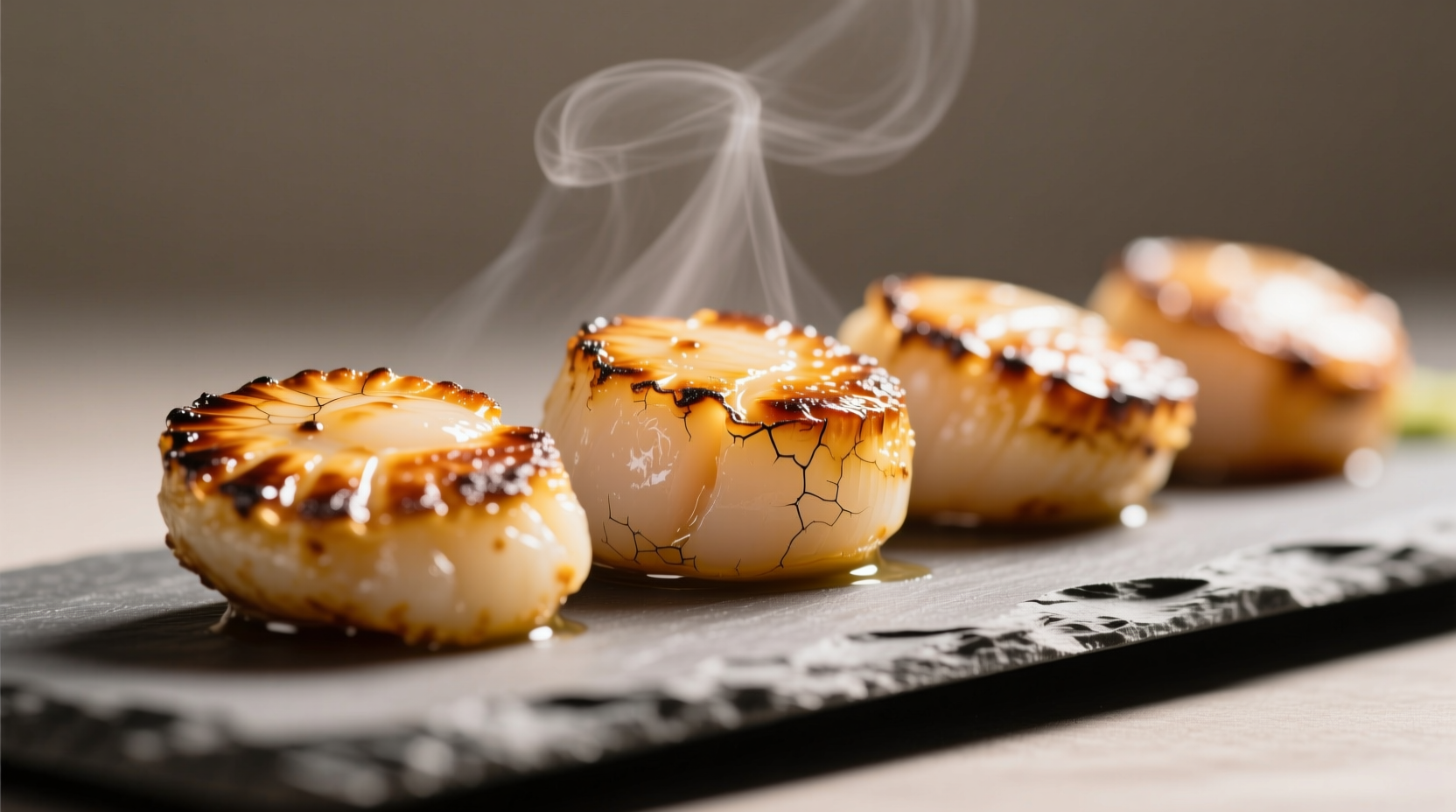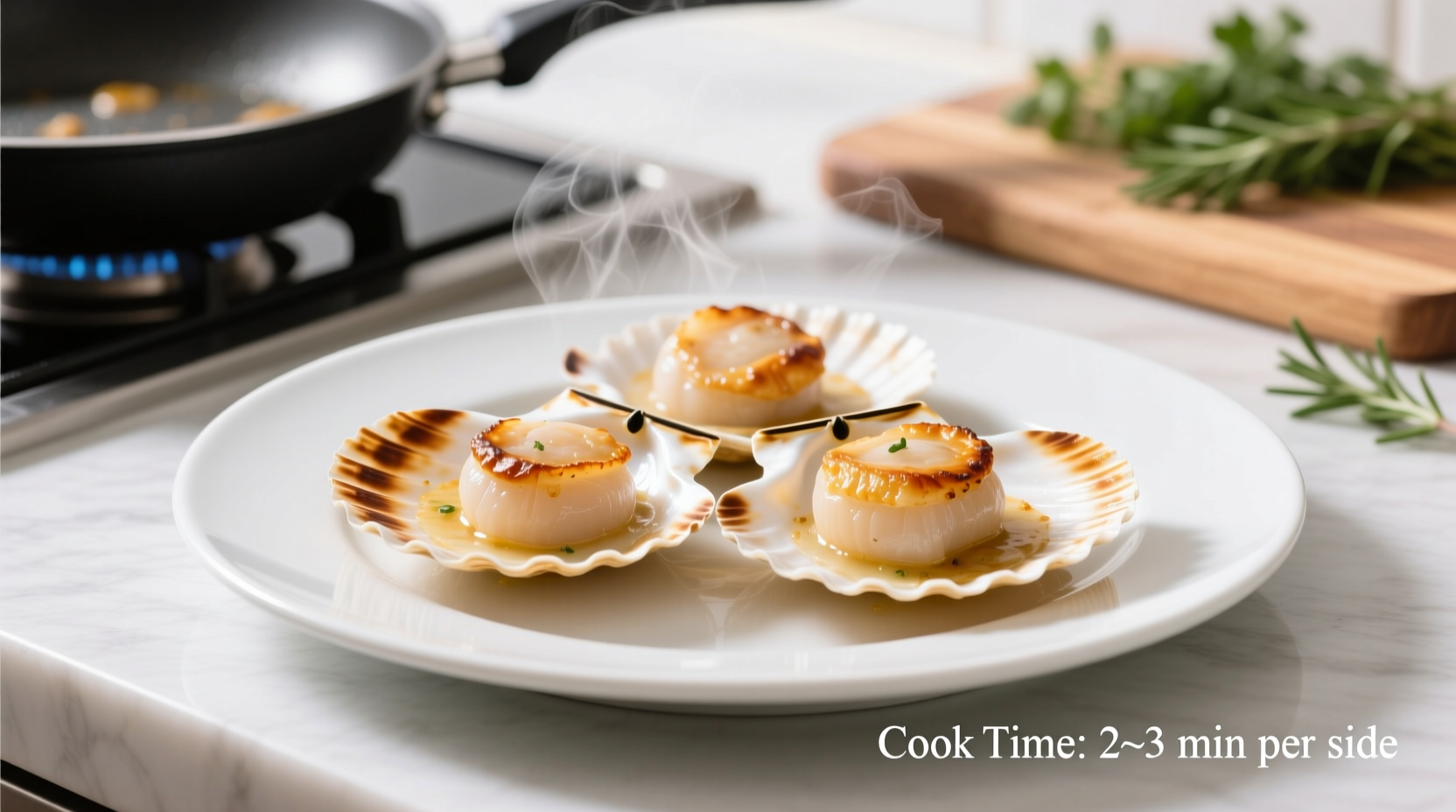Getting restaurant-quality seared scallops at home seems tricky, but mastering the timing and technique transforms this delicate seafood into a foolproof dish. Whether you're preparing a quick weeknight dinner or an impressive date night meal, understanding the precise cooking window makes all the difference between tender perfection and disappointing rubber.
Why Timing Alone Won't Guarantee Perfect Scallops
While "how long to cook scallops in pan" suggests a simple time answer, successful searing depends on multiple factors working together. Professional chefs emphasize visual and tactile cues over strict timing because:
- Pan temperature varies significantly between cast iron, stainless steel, and non-stick
- Scallop size affects heat penetration ("dry-packed" U10 scallops need more time than smaller varieties)
- Starting temperature of scallops impacts cooking speed (chilled vs. room temperature)
- Moisture content determines whether they sear or steam
The USDA Food Safety and Inspection Service confirms that seafood should reach 145°F internal temperature, but checking this with a thermometer often punctures delicate scallops. Instead, learn to recognize the visual transformation that indicates perfect doneness.
Essential Preparation: The 10 Minutes That Make or Break Your Scallops
What happens before scallops hit the pan determines 80% of your success. This critical phase directly impacts how long to cook scallops in pan:
Drying Technique That Prevents Steaming
Pat scallops thoroughly with paper towels, then place on a clean kitchen towel lined plate. Refrigerate uncovered for 10-15 minutes. This draws out excess moisture—FDA seafood guidelines note that surface moisture creates steam instead of sear, leading to uneven cooking.
Temperature Matters More Than You Think
Remove scallops from refrigerator 20 minutes before cooking. Cold scallops dropped into hot pans:
- Cool the pan surface, preventing proper sear
- Cook unevenly (overcooked exterior, raw interior)
- Release proteins that cause sticking

The Precision Cooking Process: What Happens Minute-by-Minute
Follow this exact sequence for flawless results every time. These timing guidelines apply to standard "dry-packed" sea scallops (1.5-2 inches diameter) in a properly preheated pan:
| Cooking Stage | Visual Cues | Time Range | Critical Action |
|---|---|---|---|
| First side searing | Edges turn opaque, golden crust forms | 2-3 minutes | Do NOT move or press down |
| Flipping transition | Natural release from pan surface | Instant | Use fish spatula at 30° angle |
| Second side cooking | Top becomes translucent (75% cooked) | 1.5-2.5 minutes | Add butter for basting if desired |
Why the First 30 Seconds Determine Everything
When properly dried scallops hit a 400°F+ pan, they'll initially stick slightly then naturally release when the crust forms. This is your first critical indicator. Forcing them to flip too early tears the delicate flesh. Culinary Institute of America research shows this Maillard reaction begins at 300°F—below this temperature, you're essentially poaching rather than searing.
Context Boundaries: When Standard Timing Needs Adjustment
While 2-3 minutes per side works for most scenarios, these common situations require timing adjustments:
- "Wet" vs. "Dry-Packed" Scallops: Chemically treated "wet" scallops release more moisture, requiring 30-60 seconds longer per side to achieve proper sear
- Cast Iron vs. Stainless Steel: Cast iron retains heat better—reduce second side by 30 seconds to prevent overcooking
- Cold Kitchen Environment: In temperatures below 65°F, add 20-30 seconds to first side cooking time
- Overcrowded Pan: Each additional scallop lowers pan temperature—cook in batches rather than reducing time
Food scientist Harold McGee's research in On Food and Cooking explains that scallops' delicate proteins begin to toughen immediately after reaching 130°F internal temperature. This narrow window (130°F-145°F) is why visual cues outperform strict timing.
Doneness Indicators: Your Foolproof Visual Guide
Forget timers—watch for these precise visual markers that indicate perfect doneness regardless of cooking time:
- First side: Deep golden-brown crust with no gray spots (sign of insufficient heat)
- Natural release: Scallops detach easily when crust forms (no tearing)
- Second side: Translucent center becomes opaque (about 75% cooked through)
- Texture test: Slightly firm to touch but still yielding (like the base of your thumb when making OK sign)
Overcooking by just 30 seconds causes significant texture degradation. The University of California Cooperative Extension notes that seafood proteins contract rapidly when overheated, squeezing out moisture and creating that unpleasant rubbery texture.
Troubleshooting Common Timing Mistakes
Even with perfect timing knowledge, these issues frequently sabotage home cooks:
"Why My Scallops Stick to the Pan"
This happens when either:
- Pan wasn't hot enough before adding scallops (minimum 400°F)
- Scallops weren't properly dried (excess surface moisture)
- Attempted to flip too early (wait for natural release)
"Why My Scallops Steamed Instead of Searing"
Caused by:
- Overcrowded pan (maintain 1-inch spacing)
- Using oil with low smoke point (avocado or grapeseed oil works best)
- Covering the pan (traps steam)
Resting: The 2 Minutes That Make Perfect Scallops
After removing from heat, let scallops rest for 1-2 minutes. This critical step:
- Allows residual heat to finish cooking center gently
- Redistributes juices throughout the scallop
- Prevents immediate temperature drop when plating
Serving immediately after cooking shocks the delicate proteins, causing them to expel moisture onto your plate. This final carryover cooking accounts for why many chefs remove scallops 5-10 degrees below target temperature.
Pro Timing Tips for Special Situations
Adapt your cooking time for these common scenarios:
- Smaller bay scallops: Reduce to 1-1.5 minutes per side
- Cold room temperature: Preheat pan 2 minutes longer before adding scallops
- Butter-basted scallops: Reduce second side by 30 seconds (butter lowers effective cooking temperature)
- Post-sear oven finish: Sear 1.5 minutes per side, then finish in 375°F oven for 2-3 minutes











 浙公网安备
33010002000092号
浙公网安备
33010002000092号 浙B2-20120091-4
浙B2-20120091-4